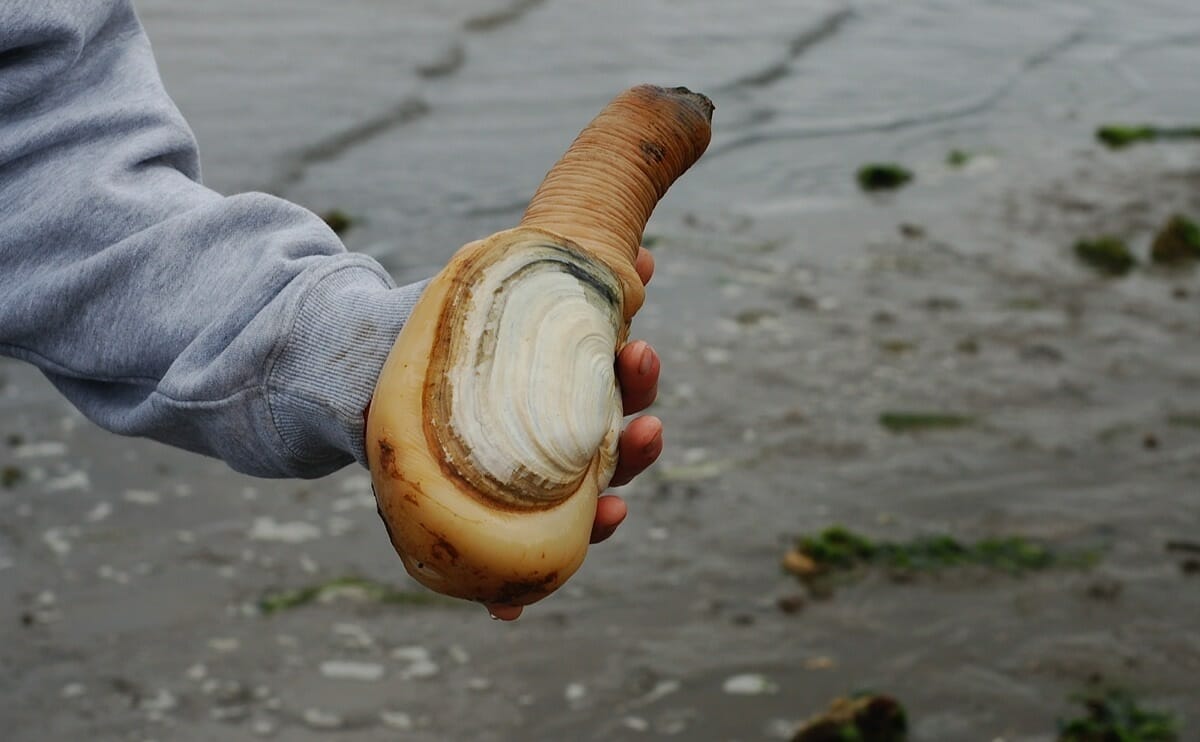When even the most responsible farming turns out to have an unexpected impact on the environment.

So first, a primer: geoduck, pronounced, in the face of all logic, “gooey duck,” is a giant clam native to the coastal areas of the Pacific Northwest and British Columbia. In the wild, it can live for more than a century and grow to more than three feet long, most of that a giant phallic siphon that protrudes from the all-too-small shell. Geoduck is a delicacy anywhere people have good taste: it’s especially popular in China and Vietnam, but any good seafood chef will know it and love it.
It’s also tremendously valuable, earning up to $100 per pound when exported. That’s led to a boom in geoduck farming, and it turns out that the geoducks happen to love Puget Sound, a heavily populated inlet not too far from Seattle. We’ve profiled the biggest geoduck farmer in the region, Taylor Shellfish Farms, which has attracted a fair amount of criticism from locals about the way the geoduck is farmed.
Neighbors sometimes have issues with the specific farming strategy, which relies on baby clams being planted, like seeds, in the sands of the shallow sound. But because there are plenty of animals that would love to prey on baby geoduck, farmers stick a PVC pipe around the baby clams (which protects them from underwater predators like fish and snails) and covers that with mesh netting (which protects them from aerial predators like herons). These farms look pretty strange in the low tide, like a robot farm that’s growing pipes instead of delicious bivalves.
Critics have long held that the extensive geoduck farming in Puget Sound is harming the environment, but until now, that hasn’t been a particularly effective argument: Clams generally are not very invasive creatures to farm, and the geoducks are farmed without any sort of pesticide. But the very first long-term study of Puget Sound geoduck farming, conducted jointly by researchers from the University of Washington and the National Oceanic and Atmospheric Administration’s Northwest Fisheries Science Center, was just released, and in part, it confirms their suspicions.
What’s interesting here is that the actual geoduck does not seem to be much of a problem; the study concludes that there could be twice as many clams in the sound without negatively affecting the environment. Where the farming harms the environment is in those unsightly PVC pipes and mesh netting, but not always in the way you might expect. For example! Certain fish and crabs have actually been shown to increase in number with the addition of the farms, because they can swim or crawl under the netting, which protects them from predators.
But a move like that can send problematic ripples throughout the entire ecosystem. With those fish and crabs finding themselves accidentally protected, birds like herons and eagles and predatory fish like salmon have been deserting Puget Sound.
The study didn’t look at the entire region, but its conclusion seems clear. Geoduck farming isn’t, by any stretch, the worst sort of farming for the environment. But it also doesn’t make sense to ignore that any large-scale farming in a wild environment will have an impact – and it’s important to figure out how to lessen that impact.
